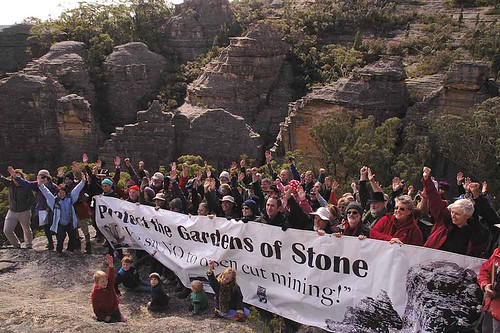Kim Martin from the Southern Highlands Coal Action Group is featured on Page 1 of the Australian today.
The article is interesting in that it is very wide ranging, (not just the Southern Highlands) for much of the previous discussion has been about Toowoomba, where a mine was stopped which had proposed going right up to the edge of the town. The article actually refers to both coal and CSG mining, in Qld, NSW Southern Highlands and also gas mining in St Peters (inner city Sydney),
The point we are trying to make is that we are all in this together. Coal mining and CSG are equally damaging to our most precious resource – water.
That came out clearly at the meeting at Helensburgh two nights ago – when the Catchment Austhority Chief Executive, Michael Bullen spoke (amongst many others). Previously the SCA has been perceived as “the enemy” down there, but they are not. They are caught in a bind, by the Dept of Planning. He spoke very well, and was well received. At least we know they are genuinely concerned about the possible impact from Gas mining in or under or beside the Catchment. Especially from possible contamination of the catchment lands from “produced water”. As Jess Moore pointed out – there are contaminants (radioactive traces, and endocrine disruptors) which are not able to be removed by reverse osmosis treatment.
Water is the common thread through all these “cases” – lose the water or have it contaminated, and we are all ruined.
The profits of a few are a threat to our “common wealth” (not just monetary, but in the old fashioned meaning of the term – our general wellbeing).
Denis Wilson
Australian Water Campaigners


